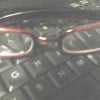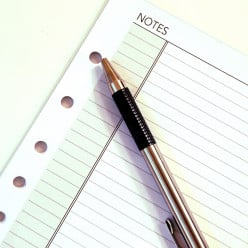How can I draw a real looking animals.
How can I draw a real looking animals.
I can draw them from from draw 50 animals book, and they look decent, but when I draw from pictures I can't seem to make them look real.Learning the basic shapes for drawing animals can help. Here's one site that offers help. There are lots of books and sites, however, and I think that would be where you could start.
From there, using a photograph to fill in details may help.
Since you say you can already draw them fairly well, you may want to take a different approach: Study just one part of the animal (a leg, eyes, the fur, etc.) Look for how shadows indicate things like muscles or how highlights can bring life to eyes or fur. These are the things that make a drawing have depth and seem to come to life.
Your public library probably has lots of books on how to draw, show shadows, etc., and you may want to browse them.Use pencil to draw circles and rectangles for your animal. Then give those shapes some fattening up and smoothing. And then just shade in the whole thing, and some shadows as well. Simple enough.
- FreedomChic1776posted 16 years ago
0
Its all in the shading. Look at where the shadows and light fall on your picture. I drew an elephant from a picture without going by the animal shape/books. Just by looking at the shape, shadows and light I did a fairly decent job. You can check it out at http://hubpages.com/hub/From-My-Head-to-My-Hand.
- sneakorocksolidposted 16 years ago
0
I trace but that doesn't work for everything. You could cut out pictures and glue them. Or do something more abstract and it wouldn't matter. Peace.
Choose one type of animal at a time like "Horses" or "Cats" or "Dogs." Read online tutorials on drawing that animal. Take some photo references of the animal and also do some quick sketches of it. If you look at a live animal, say a sleeping cat, and try to draw it in under three minutes -- and then do that every time you see the cat sleeping -- eventually your eyes, your mind and your hand will get used to all its poses and proportions.
I've been studying my cat by taking reference photos and drawing him, usually while asleep but sometimes when he's sitting up awake, for several years. The more often I draw him, the more realistic he comes out. Realism takes practice and observation.
Good books can also help. I recommend "How to Draw Animals" by Jack Hamm, it costs $10 or so from Amazon or assorted bookshops and it's a Dover book. Don't even try reading through it except to skim and get an idea where things are. Work through it by section one animal at a time copying Jack Hamm's drawings until your copies look good like his. Then try drawing the real animal.
Practice, observation and study are the ways to draw real looking animals. Books like Hamm's are great for learning how to do textures for fur and feathers and scales like on a bird's feet or a snake. Getting eyes right means studying them for that type of animal. Put a cat's eyes on a horse and you have a weird monster (heck, give it fangs too and call it a good monster!) Same if you give it human eyes, it will be scary.
Cats have very short legs compared to people or horses. I began studying horses last year when I started getting comfortable with cats and they are so different. The joints in any animal's legs are different from the ones in human legs and that takes practice to know which way they bend and where.
One quick answer is to take a good photo of one, trace the outlines, then draw from the photo very carefully shading dark and light wherever it is even if you think it looks weird, wrong or stupid. It will come out right if you do it carefully. Try printing out the picture and marking a grid over it, then put a grid on your drawing paper and draw only what's in each square of the grid in order where that square is. This gives even total beginners great accuracy and real looking animals -- and it is good practice for getting them right without the grid too later on.Hi Looneygirl,
If you want your drawings to look realistic, try these tips.
At first until you can get the outline correct just by sight, use a grid, or even trace it. Use these shortcuts at first and then later attempt without them. Pay particular attention to the eyes, nose, ears and etc. Not every creature is created equal and there are no exact science on eye placements and features, everyone varies a little, so you need to get them exact. The intitial sketch should be done very lightly so you can erase as needed.
Once you have the outline, if you are right handed, start from the left side, if you are left handed, start from the right side! This will help to keep the "smudging" to a minimum.
I use a soft .5 mechanical pencil, but you can use an ebony too if you like. Just color/shade the outline in. most of the drawing will be shaded a little. I focus on the difference in the shadows. If your picture has dark places, them make them dark on your drawing. Use a gummy type eraser to help with the highlights and erase mistakes. Finish it off my using a "tortillion" or blending stump to blend everything smoothly and make it look realistic.
Once you are finished spray the drawing with a clear cote or hairspray to protect it.
Happy drawing! I have plenty of drawing hubs on my hubpages and a portrait drawing website here http://www.soulreflectionsbyjeff.com/
Let me know what you think!
Jeffcarefully look at whatever it is you are drawing.you should notice that there are no outlines.anytime i begin a drawing i always open it in photoshop and switch the mode to greyscale i then adjust the contrast a little to a lot darker and the briteness untill i am satisfied with the total look then 2 great quality prints,heres why two. on one of my prints i outline on the ref photo all of my darkest areas and take note as to any hardline placement. the other print keep as neat and clean as possible.these are the maps you use for completing the journey from begining to end. begin by chunking in all of your darkest areas. By the way I use vellum bristol for the paper as it can take a lot of abuse when you are shading and so forth, pencils are 9b woodless an assortment of blending stumps and a kneaded eraser. once you have all the darkest areas in take a look at the next darkest areas and start those once you have all of your landmarks squared away the real fun begins...
Patience and Practice! Animals are a little harder, for me, but you can do it. Take your time and have a good lamp or light to help with the applying of the background and underground area of your paper or board you attempting to draw your animal. Save your better paper for when you make your best copy..if you are drawing it for someone. Make thumbnail sketches. Like one large sheet(note book size). Make as many squares as you want. Either fold or draw with a ruler. Treat each square individually. This will help build up your sense of perspective and get a working angle of the animal from photo to your paper. Do a day or a few minutes a day of drawing across the squares different images of your animal. Close up. Try to capture the best image possible to your naked eye and to your senses in drawing to your ability. Sorry, I didn't mean to be crowding you.
Related Discussions
- 8
What is very important while drawing a picture?
by Shake Shah 13 years ago
What is very important while drawing a picture?I am not so skilled in drawing. but I loves to draw. If you are a great drawing artist, what is your advice to me, while drawing.
- 15
How can I get better at drawing?
by HarleyBogart 11 years ago
How can I get better at drawing?Usually im bad I did one that was lucky but they were still bad i've tried online stuff but idk? The pic is my lucky one it is still BAD but better in person
- 17
Do you think it's disingenuous to trace images used in drawings and paintings?
by Dbro 8 years ago
Do you think it's disingenuous to trace images used in drawings and paintings?Many people posting art instruction type hubs will direct the reader to trace an image to be used in a certain art project or painting. I've always wondered if this wasn't a bit fraudulent. Shouldn't the artist draw...
- 31
How to draw?
by Wayne Tully 14 years ago
What advice would you give to other artists who need to learn how to draw....?
- 2
how to draw a perpective drawing?
by hirenlove2007 14 years ago
how to draw a perpective drawing?
- 14
Drawing Instructions? What To Draw?
by Wayne Tully 14 years ago
Just what to draw for those who don't know?!!











